Buda Castle is one of the city’s most popular tourist attractions and a UNESCO Heritage. It offers breathtaking views of Budapest from the top of Várhegy Hill. However, don’t imagine Buda Castle isolated on the hill. Around this iconic palace there are other fascinating attractions such as the Fisherman’s Bastion, Matthias Church and much more. The Buda Castle District is so big and so interesting that you’ll need at least half a day to explore it. And even more time to visit the museums or take part in underground tours!
Table of Contents
About Buda Castle
Buda Castle sits atop a hill in Budapest and has a rich and fascinating history. The first fortification dates back to the 13th century to protect the people from the Mongols who invaded Hungary. Still, there is no evidence of this initial construction.
PLAN YOUR TRIP TO BUDAPEST
Unlock the best of Budapest with the Budapest Card and enjoy free public transportation, access to the best museums, and relaxation at the famous Lukács Thermal Bath. For more info, read my review of the Budapest Card.
The best way to stay connected in Hungary is with a Holafly eSim, saving real money on data coverage. Finally, ensure your travels are worry-free by getting Heymondo travel insurance for essential peace of mind.
In 1526, when Ottoman Turks took over Buda, the palace fell into disrepair and used as barracks and storage. The medieval castle was destroyed in 1686 during the Great Siege and replaced with a Baroque palace in 1715. However, they left it unfinished in 1719 due to a lack of funds, and it accidentally burned down in 1723.
During the mid-18th century, Maria Theresa oversaw the construction of the Royal Palace in Budapest. Unfortunately, the Palatinal Palace in Buda Castle was eventually destroyed during the Hungarian Revolution of 1848. World War II heavily damaged the Royal Palace in Hungary, and it underwent reconstruction in the 1950s. Archaeological research uncovered the medieval castle’s remains and led to the reconstruction of the medieval fortifications, completed in 1966.
What’on Buda Castle
Buda Castle, a UNESCO World Heritage Site, is a fascinating destination that attracts visitors from all over the world. The Castle has many must-visit attractions. Buda Castle comprises many courtyards and a collection of buildings, resulting in a vast area.
If you look at the map, you will see that the Buda Castle is home to many museums. Some of them are the Hungarian National Gallery, the Budapest History Museum, and the Museum of Military History. Each museum offers unique exhibits and collections that showcase Hungary’s rich history and cultural heritage.
Buda Castle
Budapest, Szent György tér 2, 1014
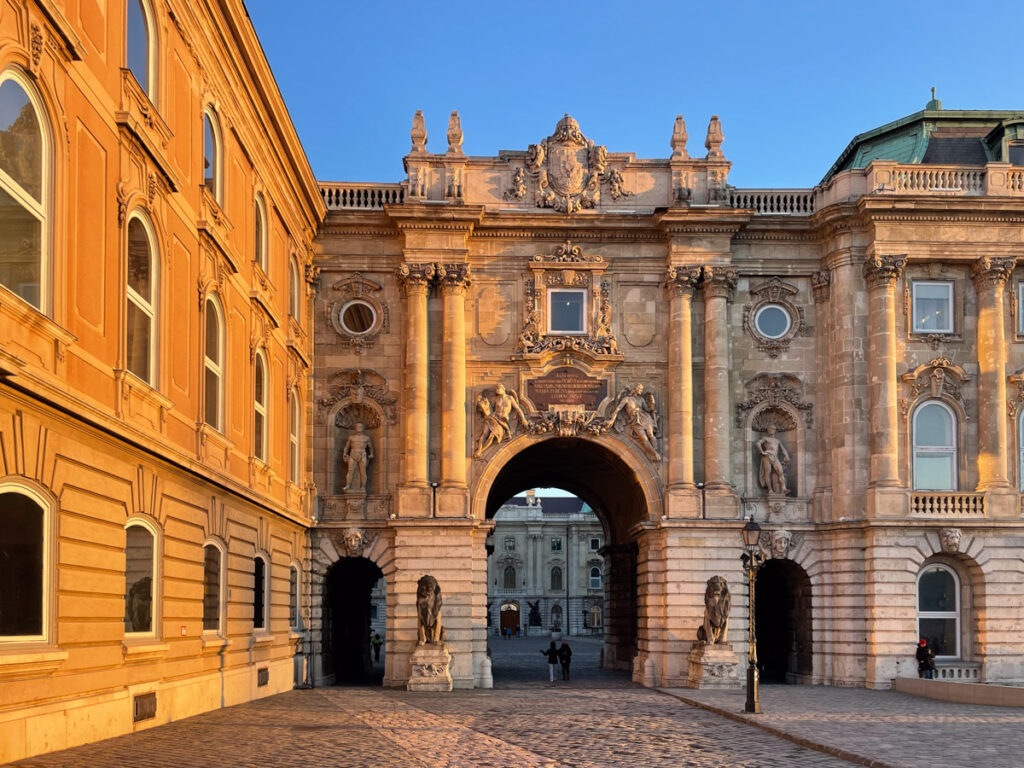
Top Attractions in Buda Castle District
Before starting exploring the Buda Castle District, note that not everything is actually in the Castle area. Some places in the Buda Castle District may be quite far from the Castle itself. For example, the Fisherman’s Bastion, one of the main attractions in the area, is at least a 20-minute walk away.
Anyway, it is still worth walking. The neo-Gothic terrace of Fisherman’s Bastion offers breathtaking panoramic views of Budapest and the Danube River. On the other hand, the Buda Castle Labyrinth is a fascinating underground maze of caves and tunnels shrouded in mystery and history. Witness the Changing of the Guards at the Hungarian Presidential Palace showcases Hungary’s rich cultural heritage. Buda Castle District is plentry of attractions and things to see.
Matthias Church
The Matthias Church is a Catholic church in the Buda Castle area, initially built in 1015 in the Romanesque style and later rebuilt in the late Gothic. The building is an amazing centuries-old religious monument adorned with intricate carvings and stunning stained-glass windows that has witnessed many important events.
Two Kings of Hungary were crowned here, and Pope Callixtus III founded a cathedral near the church. King Matthias Corvinus also held both of his weddings in this church. For this reason, the south gate is known as Bride’s Gate.
During the Turkish occupation, the Matthias Church became the main mosque of Buda. The church is also famous for the “Marian Miracle” of Buda, which happened during the siege of Buda in 1686. The wall of the church, used as a mosque, collapsed due to cannon fire. The fall revealed an old votive Madonna statue hidden behind the wall and, as the sculpture of the Virgin Mary appeared, the morale of the Muslim garrison collapsed. Eventually, the city fell on the same day.
Mátyás-templom (Matthias Church)
Budapest, Szentháromság tér 2, 1014
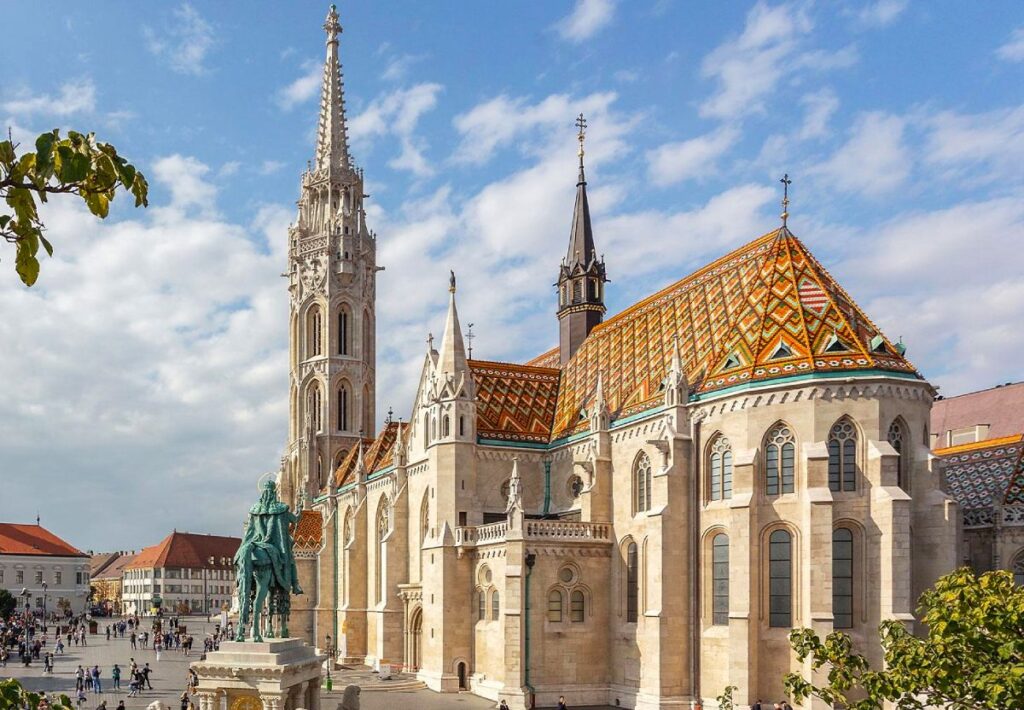
Fisherman’s Bastion
Fisherman’s Bastion is a popular tourist destination in Budapest, Hungary. It is a historical monument that offers stunning views of the city and the Danube River. From the terraces, you can see several of the city’s beautiful attractions. To the left, You can see Margaret Island, followed by the Chain Bridge. Behind the Gresham Palace, visitors can also catch a glimpse of the top of St. Stephen’s Basilica.
The Fisherman’s Bastion has seven turrets, which represent the seven Magyar communities that settled in the Carpathian Basin in 896. It was built between 1895 and 1902 and is named after the guild of fishermen who defended this part of the city walls in the Middle Ages. Today, it is a popular spot for visitors to take photographs and enjoy panoramic views.
Halaszbastya (Fisherman’s Bastion)
Budapest, Szentháromság tér, 1014
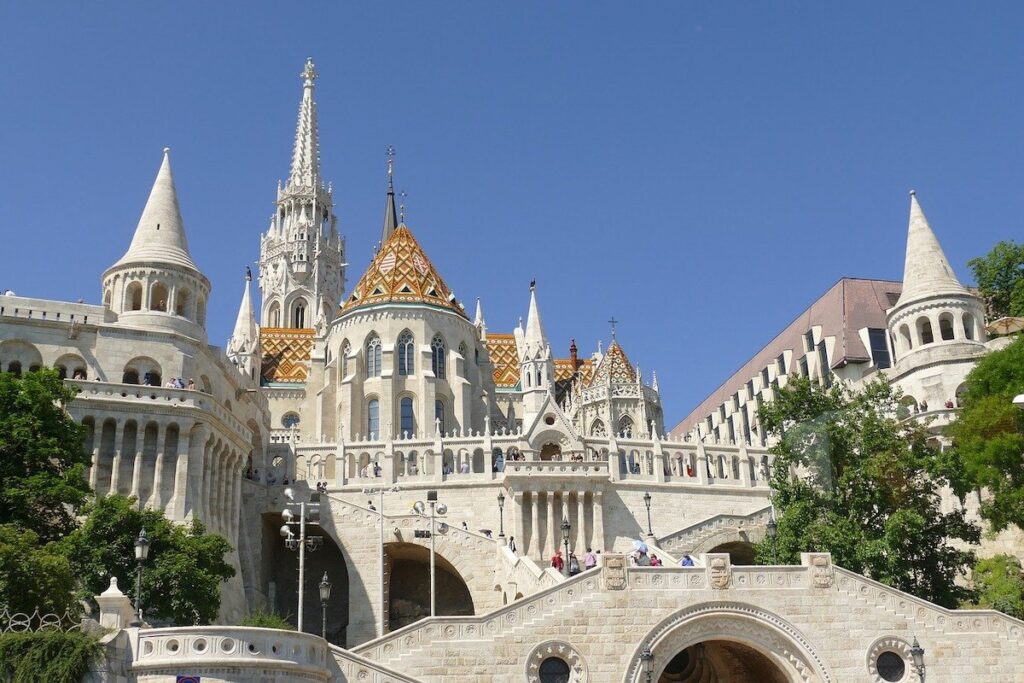
Buda Castle Labyrinth
The Labyrinth or Cave system, recognised as a UNESCO World Heritage site since 1987, is a popular attraction under Buda Castle Hill. It is part of a vast network of underground caves and tunnels in the Buda Castle District, one of the oldest parts of Budapest.
Created initially as cellars and bomb shelters, the current maze has reinforced concrete walls. It is like an underground city with narrow streets underneath the Buda Castle District. Today, you can discover the Buda Castle Labyrinth through a guided tour between historical layers of medieval musty and Cold War remnants.
Buda Castle Labyrinth
Budapest, Úri u. 9, 1014 Hungary
If you’re interested in the Buda Castle Labyrinth tour, book in advance. It’s a top-rated tour, and the tickets sell out quickly. In winter, it may not be available every day.
Sandor Palace: Hungarian Presidential Palace and Changing of the Guards
The Sandor Palace, also known as the Hungarian Presidential Palace, is a grand mansion built between 1803 and 1806 in neoclassical style for the aristocratic Sandor family. The palace is so luxurious that even the stables were made from marble.
Throughout its history, the Sandor Palace has housed 19 different Prime Ministers during Hungarian history. During World War II, a fleet of Allied aircraft bombed the historic building, leaving nothing but ruins and a heap of stones. The building was renovated and restored to its former glory in 1989.
Since 2003, the building has been the official residence of the President of the Republic of Hungary. While the Sandor Palace is only occasionally open to the public, visitors can still see it outside.
One of the attractions at Buda Castle is the Changing of the Guards in front of the Hungarian Presidential Palace. The ceremony takes a few minutes and includes spectacular choreography, such as turning rifles, saluting, marching up and down the square, domino-like movements, and drums. The changing of the guards occurs daily from 8:30 am to 5 pm every hour.
Sándor Palota – Köztársaság
(Sándor Palace – Hungarian Presidential Palace)
Budapest, Szent György tér 2, 1014
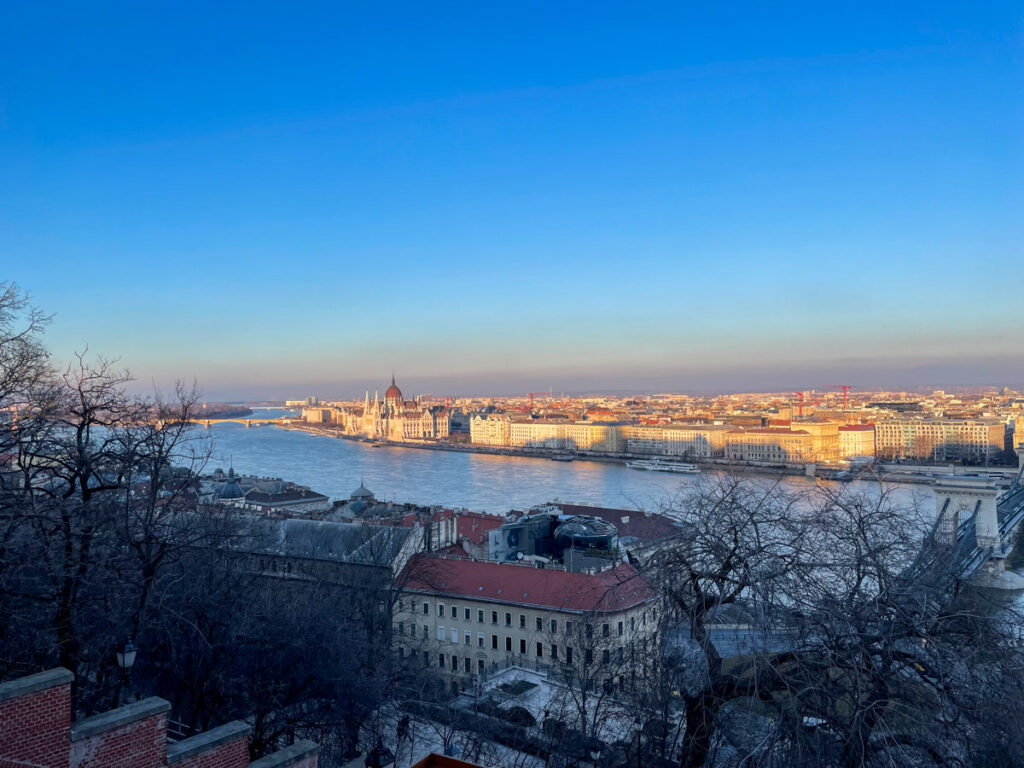
Museums in Buda Castle District
Buda Castle in Budapest houses several museums that showcase Hungary’s rich history and culture. The Hungarian National Gallery features a significant collection of Hungarian art. At the same time, the Budapest History Museum chronicles the city’s history from its founding to the present day.
Other museums include the Museum of Music History, the Museum of Military History, the House of Houdini, the Pharmacy Museum, and the Hospital in the Rock. If you’re an art lover, history buff, or simply looking for something new to explore, the museums of Buda Castle are worth visiting.
Hungarian National Gallery
The Hungarian National Gallery features a variety of artworks that showcase the evolution of Hungarian fine arts from the Middle Ages to the Modern era. You can see Medieval and Renaissance stone carvings, winged altarpieces, fragments, and remarkable Hungarian paintings.
Mihaly Munkacsy, a famous Hungarian artist known worldwide, features a permanent exhibition. Additionally, the Gallery hosts some of the most significant international artists, such as Paul Cézanne, Camille Pissarro, and Claude Monet, from the Museum of Fine Arts Budapest.
The exhibitions are enjoyable for everyone, not just art lovers. Every information board has an English translation, and you can purchase an English audio guide to learn more about the displays. You can also enjoy stunning views of the city and the Danube River from the Dome terrace.
Magyar Nemzeti Galéria (Hungarian National Gallery)
Buda Castle, Budapest, Szent György tér 2, 1014
Budapest History Museum
The Budapest History Museum showcases the history of Budapest over 2000 years, from the distinct cities of Buda, Pest, and Obuda to present-day Budapest. Entry to the museum is free with the Budapest Card. The exhibits display various items such as photographs, furniture, everyday tools, clothes, books, graphics, and more. These exhibits reflect life in Buda and Pest throughout different ages and styles.
Although some exhibits were lost during WW2, you can still explore many items. You can see medieval coats of arms of ruling and aristocratic families on carved stones and stove tiles. Visitors can also learn about the various ruling families of the Buda Palace through portraits, seals, coins, coats of arms in pictures, and interesting anecdotes and legends.
The museum also features fine books from the royal libraries, such as Matthias Corvinus’ library from the Renaissance period. Other interesting exhibits include the medieval latrine, the accommodation of the castle guards, a stone carving workshop, and artistically painted constellations.
If you’re interested in Budapest’s history, the Budapest History Museum is an ideal place to visit. It’s located in Buda Castle on Castle Hill and offers a rich and fascinating insight into Budapest’s past.
Budapest Torteneti Muzeum (Budapest History Museum)
Buda Castle, Budapest, Szent György tér 2, 1014
Museum of Music History
The Museum of Music History showcases the history of music in Hungary from the 18th century to the present. It features several exhibition rooms, which display recitals, sheet music, and original scores from renowned Hungarian composers such as Franz Liszt, Kodaly, and Bartok.
The museum particularly emphasizes Hungarian music, known for its rich folk traditions and diverse range, from the rhapsodies of Liszt to the compositions of Bartok and Kodaly, and even Hungarian Romani music.
All the exhibitions have a multimedia setting that allows you to listen to recordings of the instruments on display. The Museum of Music History often hosts concerts, accessible with the museum ticket.
Musikhistorishes Museum Budapest (Museum of Music History)
Budapest, Táncsics Mihály u. 7, 1014
House of Houdini
The House of Houdini is the only European museum dedicated to the life and shows of Harry Houdini, the famous illusionist born in Hungary in 1874. The museum features fun and entertaining magician shows on its magic stage, and visitors can see authentic Houdini memorabilia, including his handcuffs, straitjackets, posters, books, and personal letters.
Harry Houdini was born Erik Weisz in Budapest. At 17 years old, he left his family to pursue a career in magic. Over time, he gained fame by repeatedly escaping from police handcuffs, caskets, and jails. Houdini became the number one stunt performer, illusionist, and entertainer of his time. Sadly, Houdini died in 1926 in Montreal due to a ruptured appendix that occurred during a challenge to test his strength.
At the House of Houdini entrance, you can see a copy of the Water Torture Cell from the Houdini film featuring Adrien Brody. The cell contains 52 roses, each representing a year of Houdini’s life, as a unique tribute to the legendary artist. The museum is a must-visit destination for anyone interested in the life and legacy of one of the greatest magicians and escape artists ever.
House of Houdini
Budapest, Dísz tér 11, 1014
Golden Eagle Pharmacy Museum
The Golden Eagle Pharmacy Museum is a small but entertaining museum that contains a mock-up of a medieval Alchemy Lab and medicinal tools and items from the Middle Ages. Among the exhibits are unusual items such as bowls, herbs, and books dating back to the 1600s that illustrate the history of medicine.
The museum presents a wide range of surprising items, from Hungarian chemists’ relics to dried bats, tiny crocodiles in jars, and herbs used for curing. It also showcases the development of the science of medicine and pharmacy in the Middle Ages.
The building housing the Golden Eagle Pharmacy Museum was originally a merchant’s house in the 15th century. In the 1730s to 1750s, an alchemist moved in and named the place Golden Eagle, establishing the first professional pharmacy in Buda. The Alchemy Lab has original furnishings, a fireplace replica, and a cooking area that looks exactly like where an alchemist would have worked in the 17th century.
Arany Sas Patikamúzeum (Golden Eagle Pharmacy Museum)
Budapest, Tárnok u. 18, 1014
Hospital in the Rock
Hospital in the Rock was an emergency hospital in the 1930s, transformed into a nuclear bunker in the 1960s, located under Buda Castle. Access to the museum is limited to guided tours, and children are not allowed. I recommend booking your guided tour in advance because it is very popular, and tickets sell out quickly.
Built in the 1930s in preparation for the Second World War, the Hospital in the Rock had to provide general emergency care for injured civilians. However, later on, it also treated soldiers. During the Siege of Budapest in 1944-45, the Hospital, designed to treat 60-70 patients, handled over 600 wounded soldiers.
The Hospital was one of the most advanced of its time, equipped with state-of-the-art surgical equipment and generators. Even during the siege, when it was impossible in other hospitals, the Hospital could X-ray patients.
After the siege, the Hospital was used again in response to the uprising against Soviet rule. Between 1958 and 1962, it became a nuclear bunker, with the installation of a water tank, a ventilation and poison gas-filtering system, and two diesel engines to power electrical generators.
The facility became part of the civil defence infrastructure and classified as “Top Secret”. People inside the Hospital could probably survive for 72 hours after a chemical or nuclear attack. However, it became obsolete at the end of the 1960s due to the rapid development of technology.
Today, in the Hospital in the Rock Nuclear Bunker Museum, you can see the recreations of hospital treatments and day-to-day scenarios during the siege. You can also see old equipment left over from its operational days, including stretchers, gas masks, and civil protection uniforms.
Sziklakórház Atombunker Múzeum
(Hospital in the Rock – Nuclear Bunker Museum)
Budapest, Lovas út 4/c, 1012
How to Get to Buda Castle District
To get to Buda Castle in Budapest, you can walk or take public transportation. If you prefer walking, there are two routes to choose from. The Gentle Hill Walk takes about 10-15 minutes from Szell Kalman Square. It passes by the Vienna Gate, the National Archives, Matthias Church, Fisherman’s Bastion and the Presidential Palace. The Steep Hill Walk starts from the Chain Bridge at Clark Adam Square and goes up the stairs next to the funicular.
If you prefer public transportation, you can take bus 16 from Deak Ferenc Square in the city centre to Buda Castle from the Pest side. If you’re on the Buda side, you can take bus 16 or 116 from Szell Kalman Square.
A fun way of getting up to the Várhegy Hill is by taking the Budapest Castle Hill Funicular that starts from Clark Adam Square and takes you directly to the Royal Palace. The funicular is very popular, so in high season there may be queues and a waiting time of up to 30 minutes. Unfortunately the price rised up a lot, and for a return ticket you’ll spend 4,000 HUF, around €10. Read my article about Budapest Castle Hill Funicular to learn more.
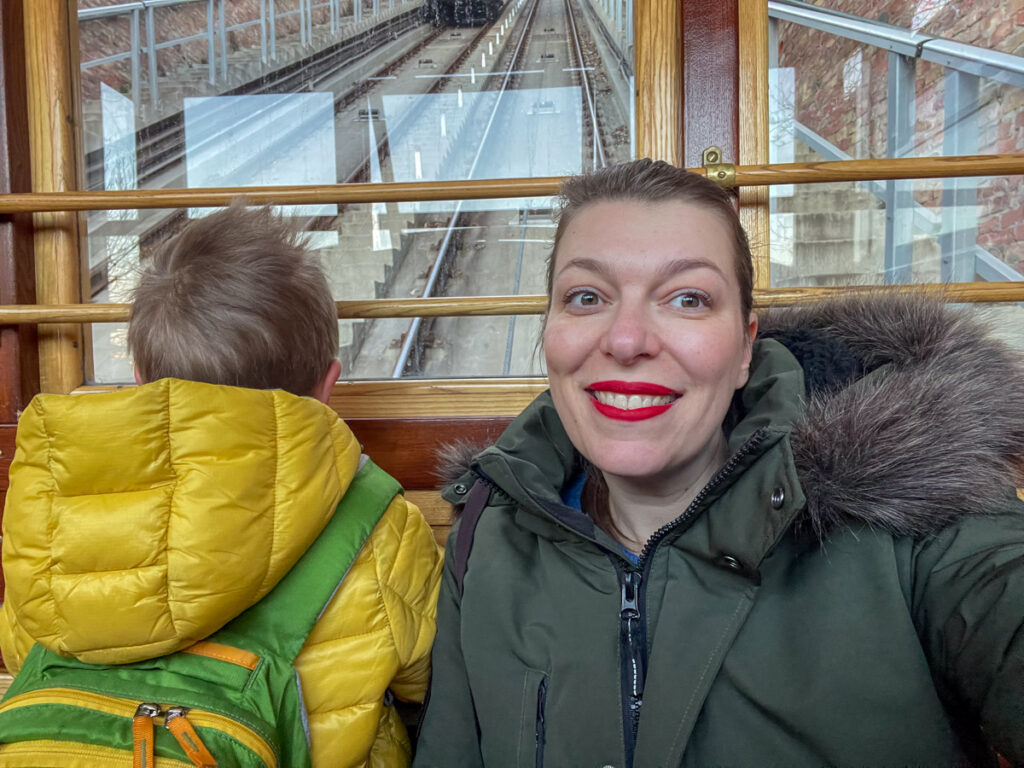
Buda Castle District Renovation: What to Know about the National Hauszmann Plan
At the time of writing, the Buda Castle District is undergoing reconstruction as part of the National Hauszmann Plan project. The project aims to reconstruct the exterior of the Red Cross Society’s headquarters according to the original designs by Alajos Hauszmann and Dezső Hültl. The castle walls, bastions, and towers are also being restored.
Unfortunately, a good part of this “renovation” consists of reinforced concrete pours, as I have seen in person during several trips to Budapest, and confirmed by friends who live there. The risk is that the Buda hill will turn into a fiction that no longer reflects its history, but we will only find out when the work is finished.
At the time of writing, some parts of the Buda Castle District works, such as the Karakas Pasha Tower, have already been completed. Others, like the Citadel, are still under restoration. So, when you visit the Buda Castle District, you may find differences in what I wrote in this article due to renovations or buildings hidden by scaffolding. Please update me in the comments how the work on the National Hauszmann Plan project is progressing.
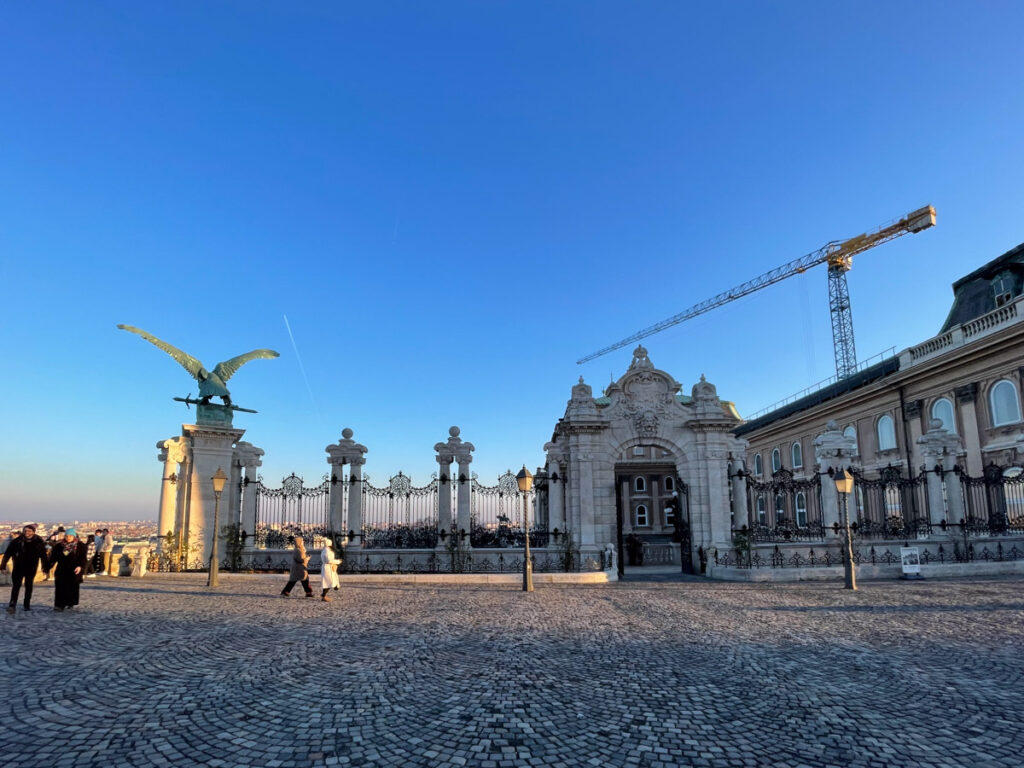
Where to stay in Budapest
Budapest offers a wide range of beautiful hotels to choose from. Hampton By Hilton Budapest City Centre (here my review) is located in the heart of Budapest, just 600 metres from St. Stephen’s Basilica. They offer a delicious breakfast and have a restaurant and a bar on-site. For those looking for a hotel with unique and stunning decor, Stories Boutique Hotel is a 4-star property situated 500 meters away from the Hungarian State Opera. They have a restaurant on-site that serves à la carte, a continental or vegetarian breakfast. If you prefer an aparthotel, Zoya Luxury Residence is an excellent option with units with a coffee machine, a dishwasher, a microwave and parking space.
As you read in my article, if you visit Budapest, ensure you don’t miss the Buda Castle District on Várhegy Hill. It is an exceptional destination that showcases stunning UNESCO Heritage architecture, museums, rich history, and breathtaking views. Feel free to share your experience visiting the Buda Castle in the comments below. I am already looking forward to coming back!
